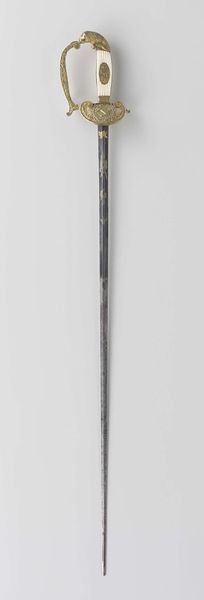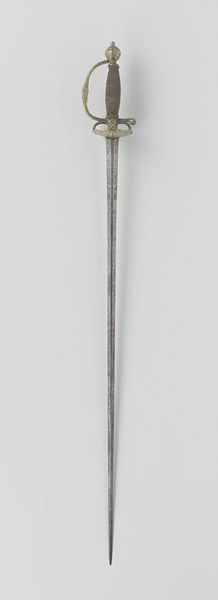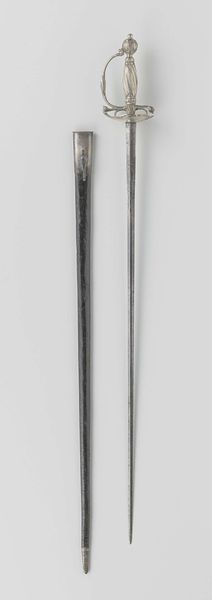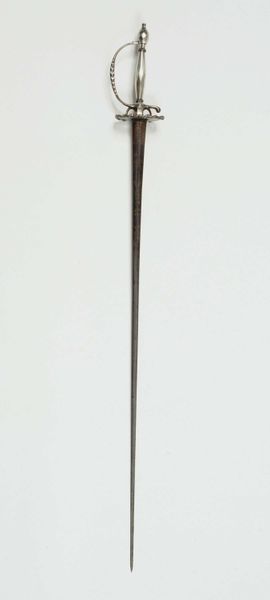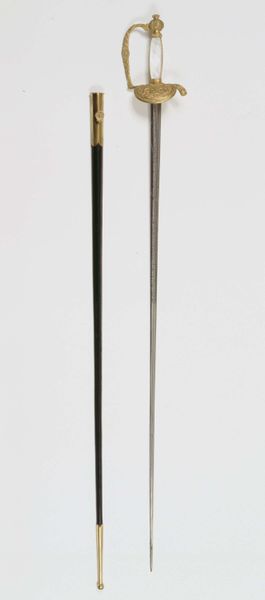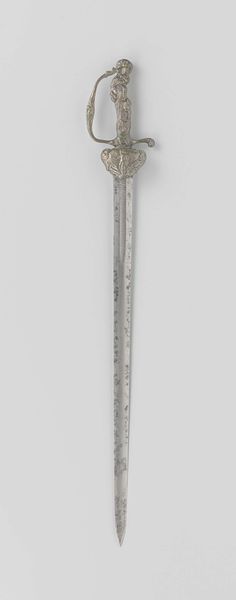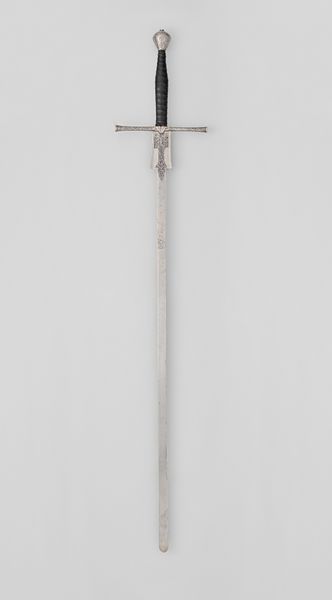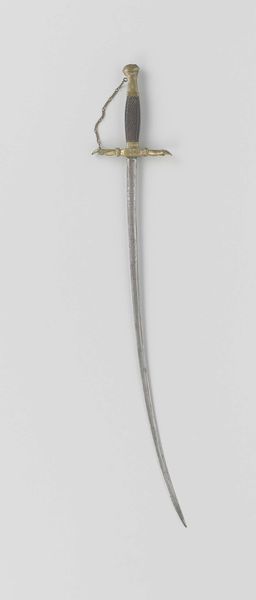
metal, sculpture
#
baroque
#
metal
#
sculpture
#
sculpture
#
statue
Dimensions: length 59.5 cm, length 47.5 cm, width 1.4 cm, weight 184 gr
Copyright: Rijks Museum: Open Domain
Curator: Here we have a delightful piece, a small ceremonial sword, known as "Sierdegen voor een kind," crafted around 1750. It’s currently held in the Rijksmuseum. What are your first impressions? Editor: Striking! Its slenderness and delicate ornamentation evoke a sense of preciousness but also inherent tension. You've got the unmistakable craftsmanship dedicated to something intended for a child, or perhaps a young nobleman, if we are being honest here. Curator: Indeed, the Baroque style is evident in the hilt's elaborate curves. The use of metal gives it weight and permanence. But do consider, it is not meant to be a plaything. Editor: Absolutely, and I find myself thinking about the labor that went into such an object. What were the working conditions like for the metalworkers who shaped this? Was this produced using specialized, proprietary methods that were jealously guarded by a given manufacturer? We are talking about raw materials, supply chains, all for the accoutrements of wealth and power, handed to a child. Curator: A fascinating perspective. The semiotic function of the object itself bears contemplation. As a miniature version of an adult weapon, what symbolic associations does it carry about entering manhood, governance, lineage, nobility and, further, the expectations and burdens placed upon someone born to a position of authority? Editor: I can't help but look at how the sword represents social and economic disparity, too. The hours of skilled labor and precious metal versus the bare necessities of many families at the time. Even a child's toy speaks volumes about consumption and societal inequality in the mid-18th century. Curator: Precisely. We must consider this cultural context for full appreciation. The child may wield the physical object, but societal structures give it real symbolic weight. Editor: The power structures implied by this miniature symbol of control are just so obvious; examining this is valuable even today, when we look at the implications of inequality. Curator: Yes, contemplating this object encourages us to confront power dynamics—how objects gain significance beyond inherent materiality. Editor: The sword gives such rich information. Who wielded power then and at what cost? Always the questions one must bring.
Comments
No comments
Be the first to comment and join the conversation on the ultimate creative platform.
